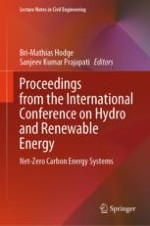2024 | OriginalPaper | Buchkapitel
Fabrication of Compact Renewable Energy System Powered by Wind–Solar Energy
verfasst von : Govinda Singh, Deepak Agarwal, Nitesh Kumar Dixit
Erschienen in: Proceedings from the International Conference on Hydro and Renewable Energy
Verlag: Springer Nature Singapore
Aktivieren Sie unsere intelligente Suche, um passende Fachinhalte oder Patente zu finden.
Wählen Sie Textabschnitte aus um mit Künstlicher Intelligenz passenden Patente zu finden. powered by
Markieren Sie Textabschnitte, um KI-gestützt weitere passende Inhalte zu finden. powered by
